
“Lindt Home of Chocolate” in Kilchberg, Switzerland celebrated its opening in September 2020 and takes visitors on a chocolate tour packed with experiences.
The expomobilia team was responsible for producing the exhibition structures and fitting out the interior of the new chocolate museum. The exhibits, ranging from detailed imitations of miniature pralines right through to the largest free-standing chocolate fountain in the world, bear witness to artistic finesse and smart technical solutions.
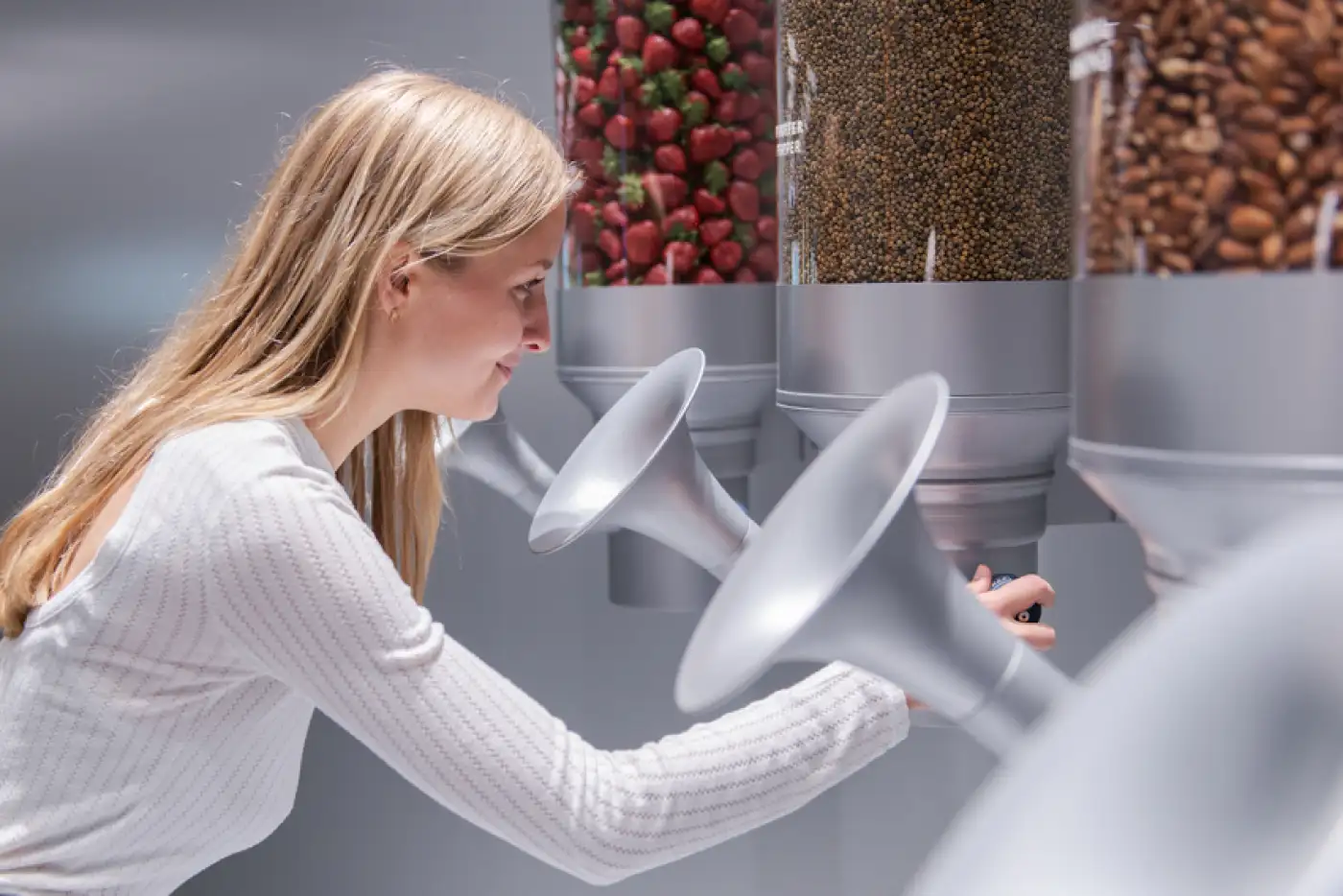
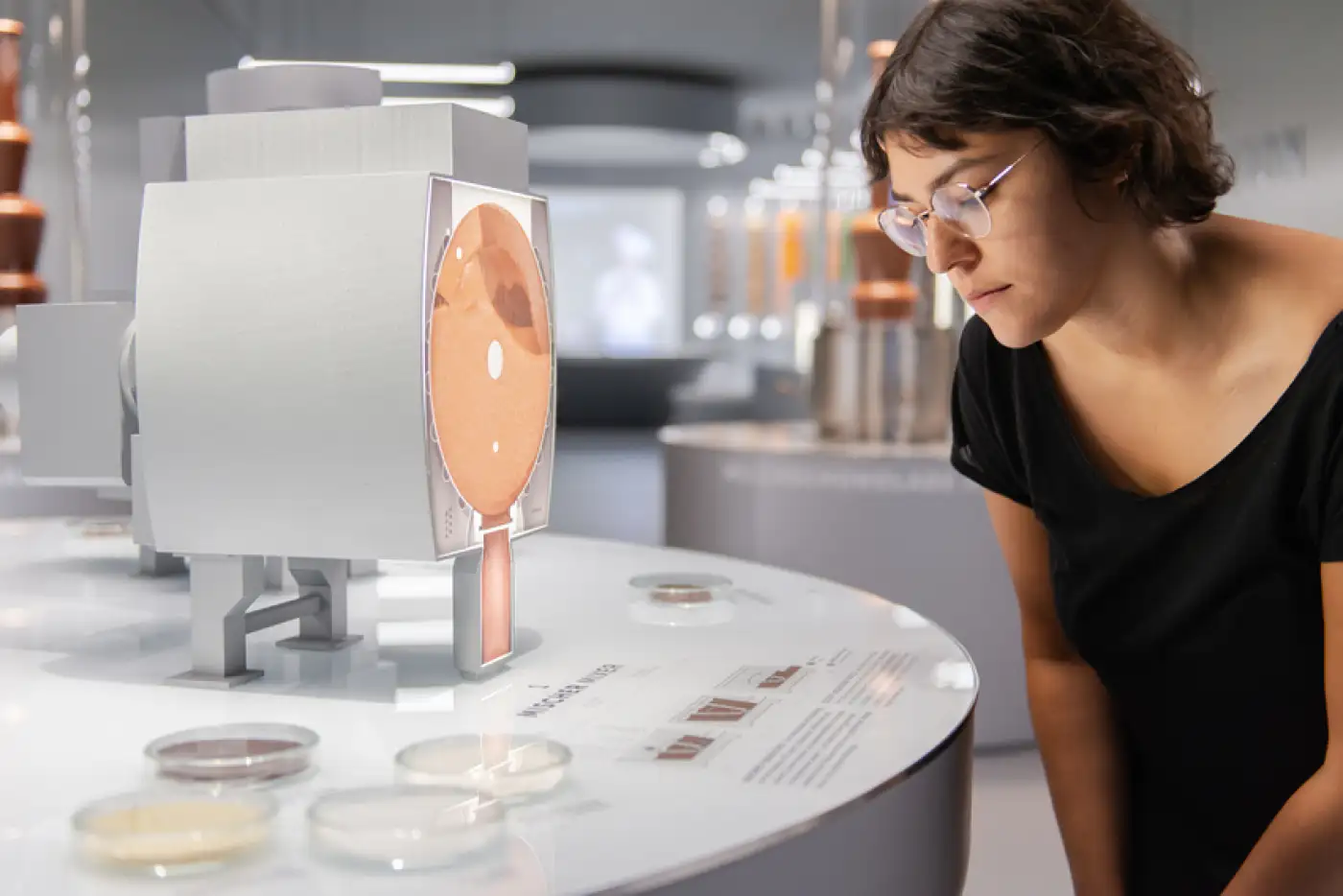
The scent of chocolate leads visitors up to another floor – to the chocolate tour. The interactive exhibition covering an area of 1,500m² was designed by Atelier Brückner. The Expomobilia team took over the building shell for the exhibition area in September 2019 and handed it back to the Lindt Chocolate Competence Foundation as a finished museum in September 2020. The Expomobilia engineers conducted the planning and technical development of the interactive exhibits. Parts of the exhibits were produced in the company’s own workshops in Effretikon – from the cocoa plantation, the 360-degree history projection room and the mini production facilities to the interactive numeric cosmos.
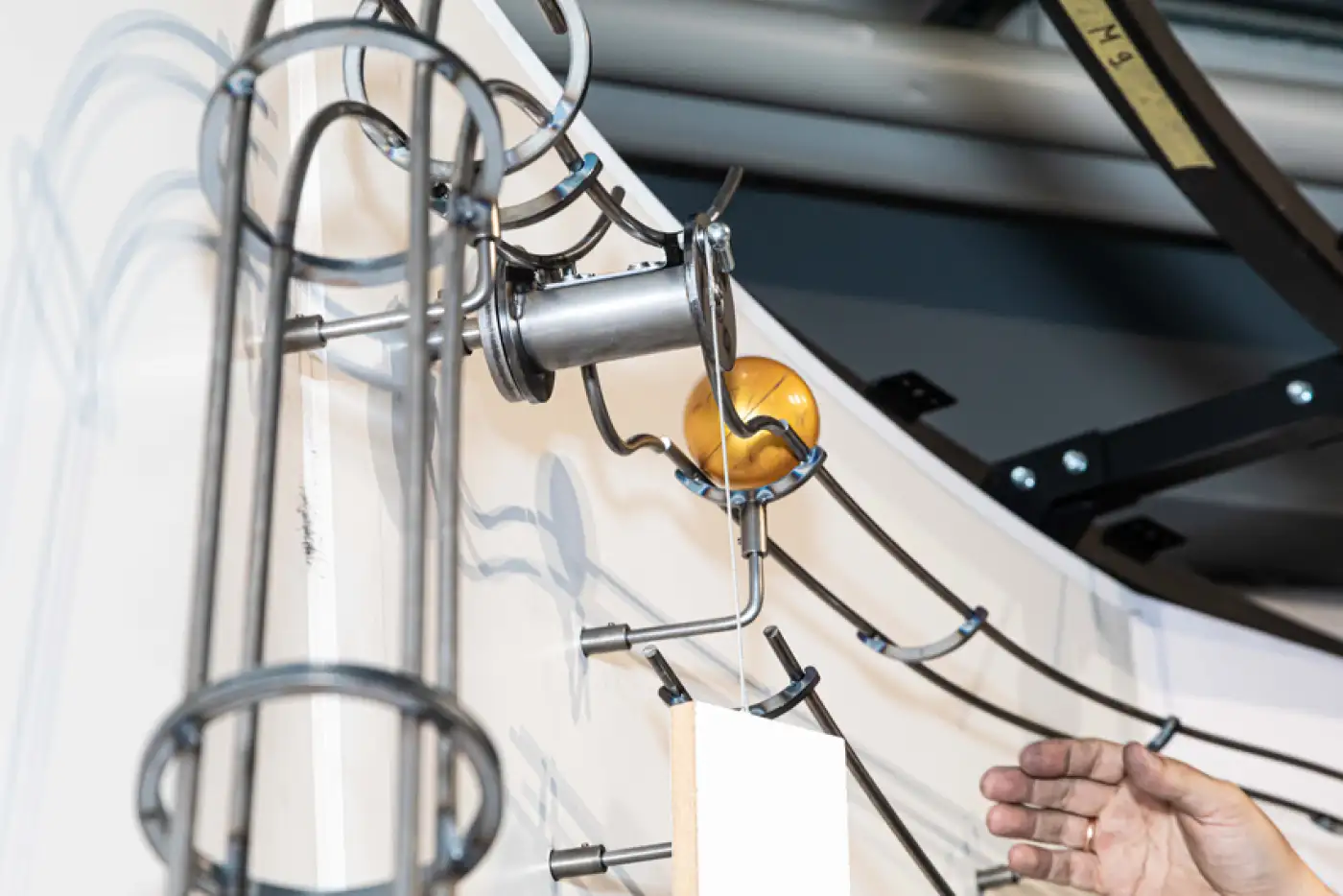
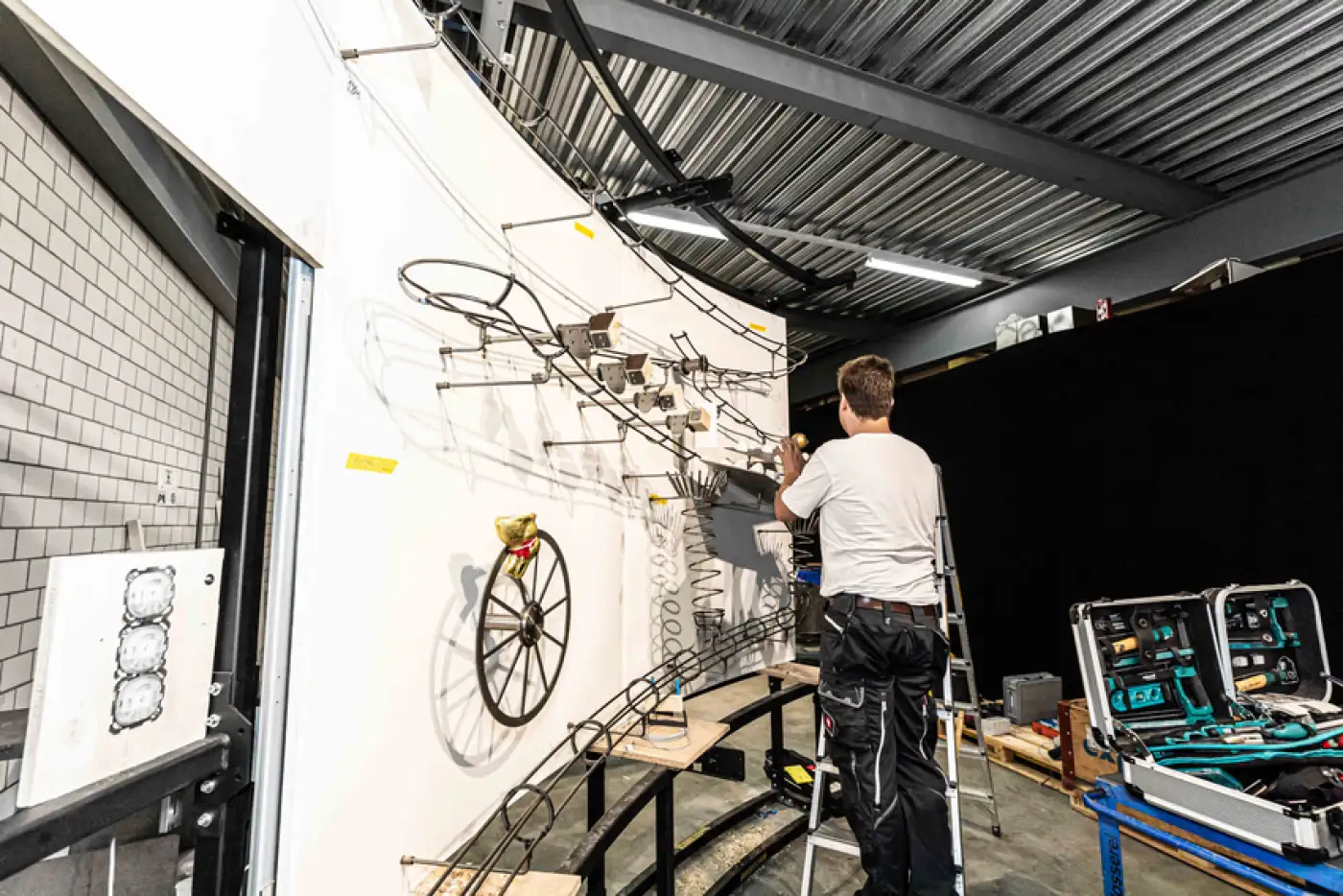
A 10-metre-wide marble run marks the end of the tour. The Expomobilia engineers first simulated this on a computer using a sketch from Atelier Brückner, allowing them to calculate the trajectory of the balls. The components were then made by locksmiths and carpenters employing a combination of traditional crafts and state-of-the-art technology, including 3D printing. The basic assembly of the marble run took place in the company’s production shop, enabling the engineering team to test and fine-tune the structure there.
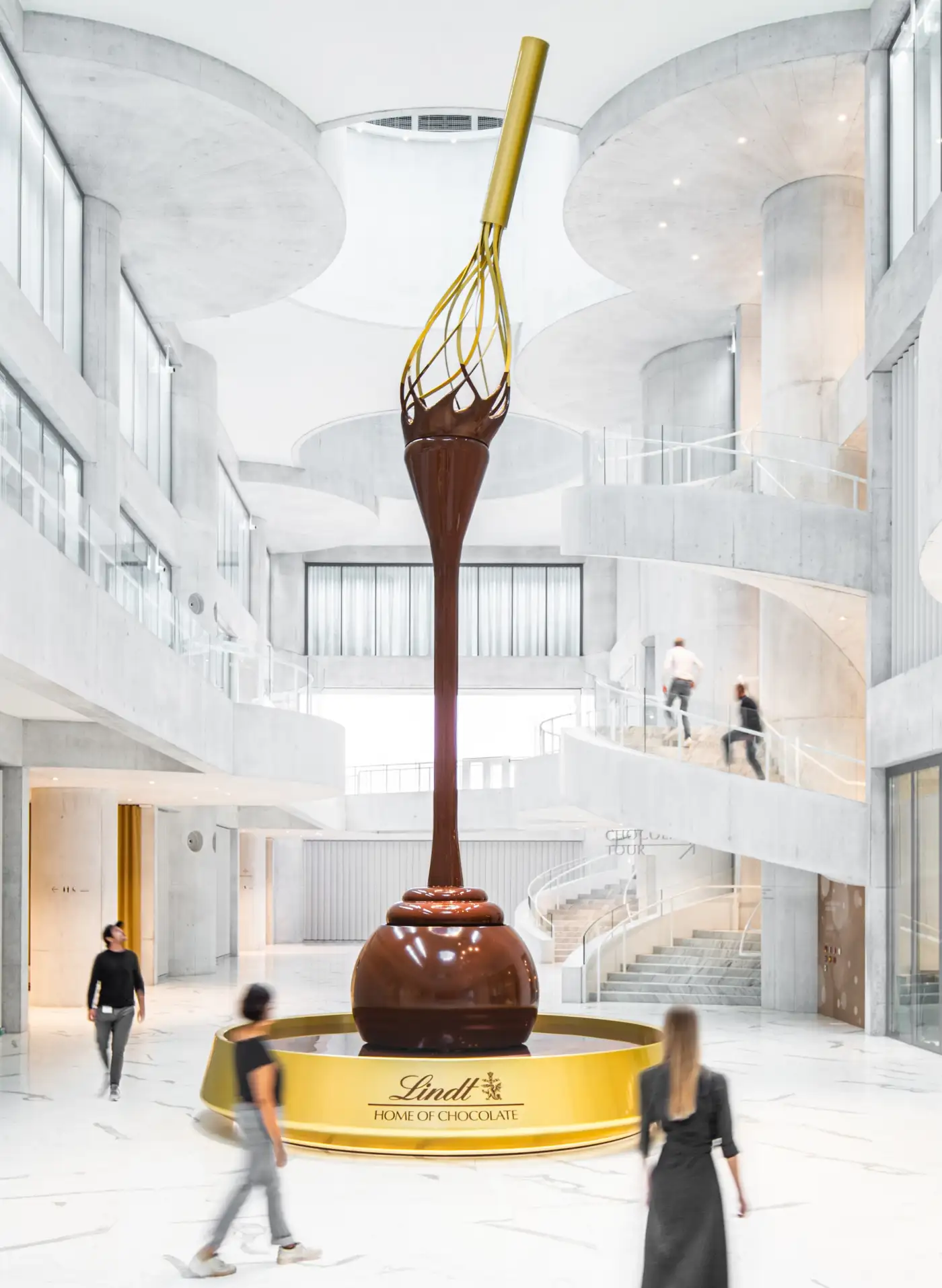
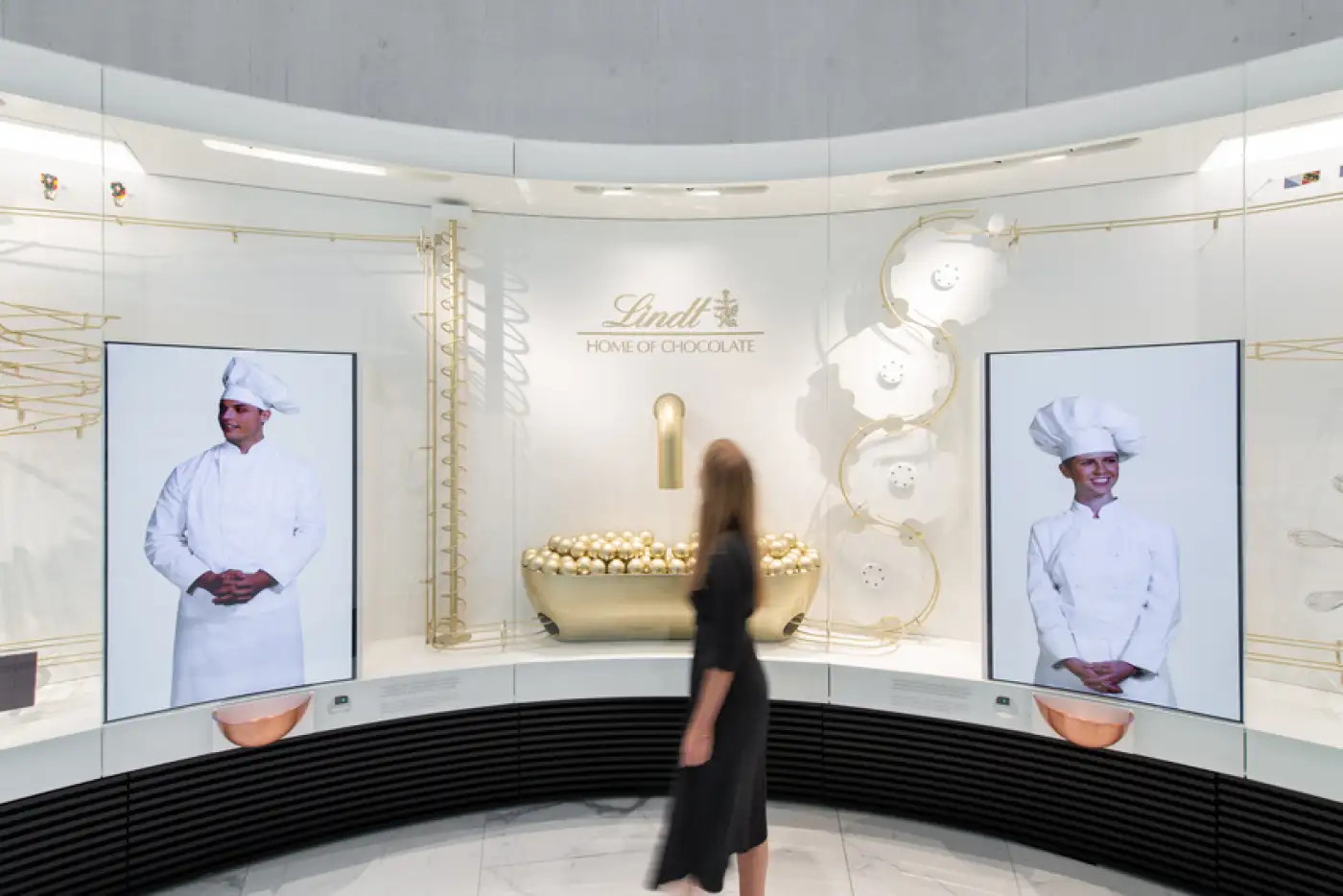
Anyone stepping into the Lindt Home of Chocolate through the white brick façade finds themselves in the spacious atrium. And featured at its centre is the world’s biggest free-standing chocolate fountain, towering 9 metres high. Some 1.5 tons of chocolate flow up and down here. For the daily change of the chocolate filter in the base of the fountain, the Expomobilia team has installed a special mechanism that can be operated effortlessly..